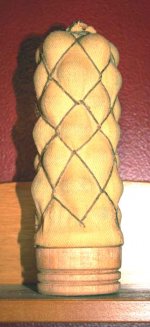DownNDirty
Bronze Member


I found fourteen of these cast iron balls today in a creek that runs through a site occupied by the British army for several months. They were all found in a small area, about 15-20 feet square. Depending on where I measured it this one had a diameter of 1.20-1.25 inches; they were all the same size.
Are these cannister shot? The diameter is within the range for canister shot used in 12 pound cannons, according to a charter that Cannonballguy shared in a post a while back.
Thanks
Last edited:









